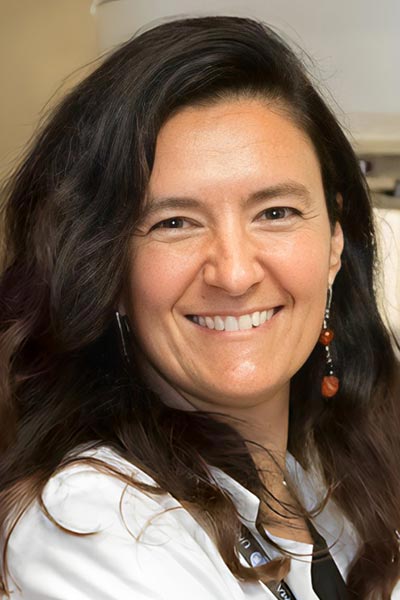
Drawing from the results of the PACIFIC, CheckMate 816, and NADIM II trials, Sara Ramella, MD, explored the range of possibilities for radiotherapy in the context of immunotherapy in curable non-small cell lung cancer (NSCLC). During her presentation on April 1 at the 2023 European Lung Cancer Congress, Dr. Ramella, a radiation oncologist and researcher at the Universitario Campus Bio-Medico in Rome, set out to answer the question: Can radiotherapy replace surgery as the local treatment of stage III NSCLC in the era of immunotherapy (IO)?
To make her case, Dr. Ramella explored three patient populations she referred to as The Good, The Bad, and The Ugly—a reference to the famed 1966 Sergio Leone movie starring Clint Eastwood.
“We have different populations,” she said. “We have patients who achieve complete response and two groups of patients with incomplete response. The first group is The Good. In this setting, surgery is not a therapeutic approach, it is a diagnostic tool. In the future, will there be biomarkers that could help us identify these patients? These patients are locally cured. For these patients, can radiotherapy replace surgery?”
Dr. Ramella said yes, she believed radiotherapy could eventually replace surgery by reducing adverse events for resectable patients who achieve pathologic complete response (pCR).
“In CheckMate 816, neoadjuvant IO-related adverse events were 33.5%,” she said. “We have to consider that surgery also causes adverse events. If we add surgery-related adverse events, the rate of grade 3-4 adverse events in (the immunotherapy arm of) CheckMate 816 is 45%.”
The second group—The Bad—have also undergone resection but not achieved pCR. This group includes about 50% of patients in the trials Dr. Ramella discussed. Fortunately, she said there is a way to improve pCR in this group, citing a paper by Altorki et al that compared neoadjuvant durvalumab with stereotactic body radiotherapy (SBRT) in patients with early-stage NSCLC to durvalumab alone followed by surgery in patients with early-stage NSCLC.1
The major pathological response rate was significantly higher in the SBRT plus durvalumab arm at 53% compared to only 7% in the durvalumab alone arm.
So, while radiotherapy may not replace surgery as the local treatment for this group, it could potentially be added to neoadjuvant chemoimmunotherapy to improve pCR rate, she said.
Finally, Dr. Ramella said the third group—the most difficult group—is an important cohort because it includes about a third of the patients in CheckMate 816 and NADIM II.
“The prognosis is not so good,” she said. “So how should we treat these patients? We know that postoperative radiotherapy has an important role in preventing local recurrence, but we don’t know yet if this kind of approach in this setting will have any benefit.”
References
- 1. Altorki NK, McGraw TE, Borczuk AC, et al. Neoadjuvant durvalumab with or without stereotactic body radiotherapy in patients with early-stage non-small-cell lung cancer: a single-centre, randomised phase 2 trial. Lancet Oncol. 2021;22(6):824-835. doi:10.1016/S1470-2045(21)00149-2












